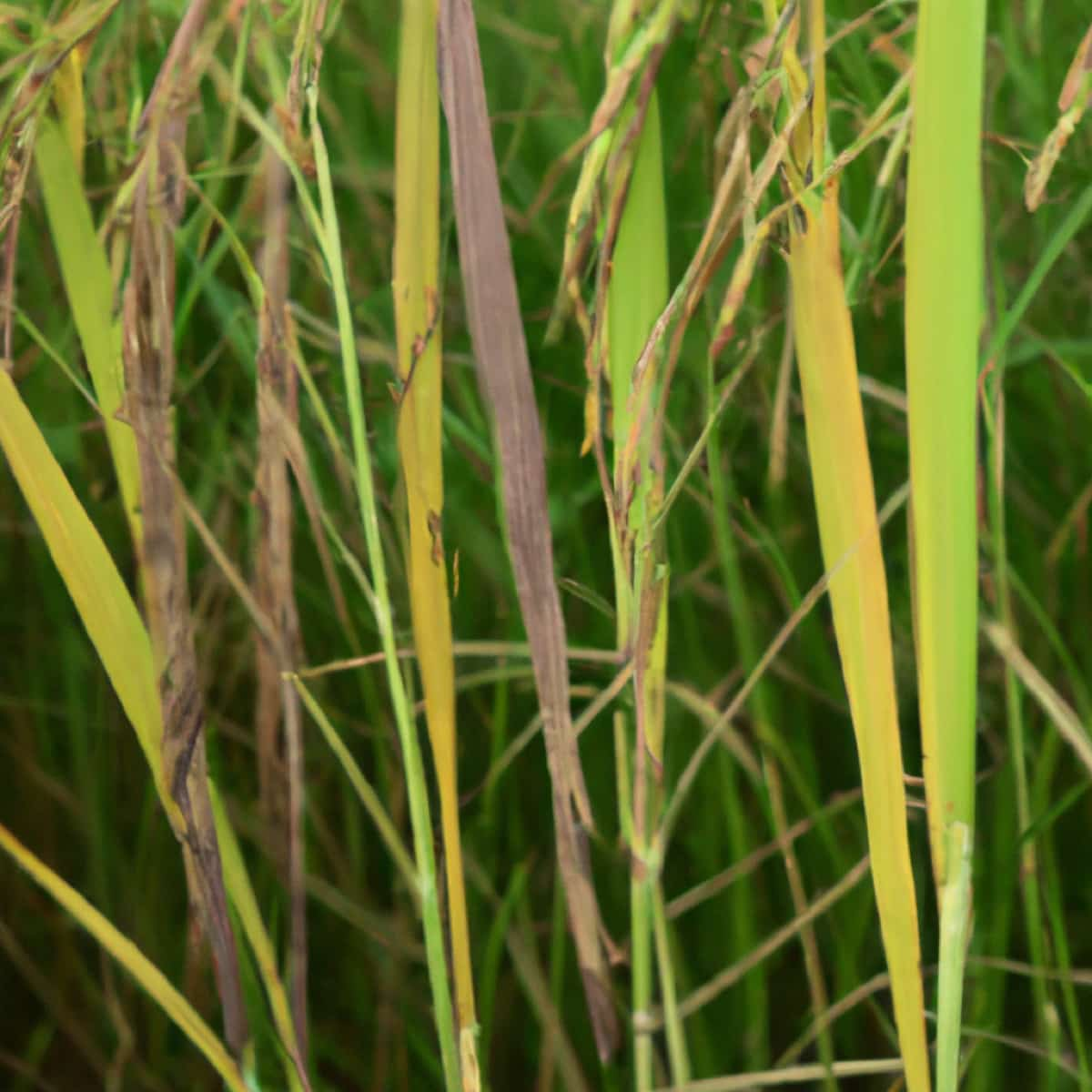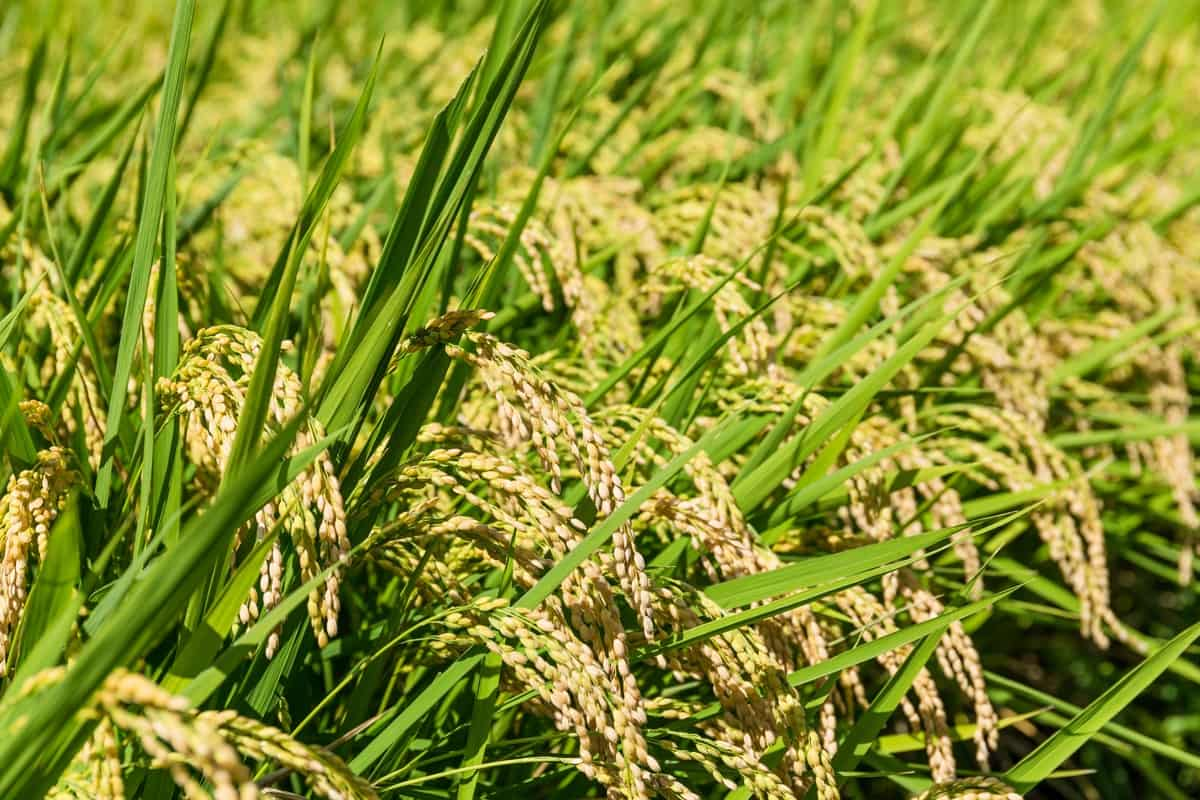Welcome to our blog post on common paddy diseases! This article delves into the causes, symptoms, disease cycle, control measures, and treatment options for these diseases. Paddy(Oryza sativa) cultivation is crucial for meeting global food demands, but it is often plagued by various diseases that can severely impact yields. Understanding the factors that contribute to these diseases is essential for effective management.

How to Treat Paddy Diseases
Major and Common Paddy Diseases
- Blast (Pyricularia grisea or P. oryzae): Blast is caused by a fungus and is one of the most devastating diseases in rice. It leads to the formation of elliptical or spindle-shaped lesions on leaves, stems, and panicles. These lesions turn grayish-white with a brown border and can cause complete plant death in severe cases.
- Bacterial Leaf Blight (Xanthomonas oryzae pv. oryzae): This disease is caused by a bacterium and results in water-soaked lesions with yellow halos on leaves. As the disease progresses, the lesions expand and coalesce, leading to the drying and death of leaves. Infected plants show reduced growth and yield.
- Rice Tungro Disease (Rice tungro virus – RTSV, RTBV): This viral disease is transmitted by insects and causes yellowing and stunting of plants. Infected plants display chlorotic (yellow) or reddish discoloration along with reduced tillering and panicle formation. Yield losses can be significant if not managed effectively.
- Brown Spot (Helminthosporium oryzae): Brown spot appears as small, oval to circular lesions with brown centers and yellow halos on leaves. The disease can affect above ground parts of the plant, leading to reduced photosynthesis and yield loss.
- Sheath Rot (Sarocladium oryzae): Sheath rot infects the sheaths enclosing the rice stem, causing their decay and turning them brown or black. This disease can weaken the stem, leading to lodging and reduced grain quality.
- Sheath Blight (Rhizoctonia solani): Sheath blight causes elongated, water-soaked lesions on leaf sheaths, which turn brown and give a shredded appearance. The disease can result in significant yield loss due to the premature death of affected tillers.
- False Smut (Ustilaginoidea virens): False smut affects rice grains, causing them to turn greenish and become powdery spores. This disease reduces grain quality and market value.
- Grain Discoloration (fungal complex): This complex of fungal diseases affects rice grains, leading to discoloration, darkening, or spotting. It can negatively impact grain appearance and marketability.
- Leaf Streak (Xanthomonas oryzae pv. oryzicola): Leaf streak causes long, slender, water-soaked lesions on leaves, which turn yellow and then brown. Severe infections can reduce photosynthesis, premature senescence, and yield loss.
Rice Blast or Blast of Rice
- Causal agent: Pyricularia oryzae (Stage: Magnaporthe grisea)
- Affects all crop stages from seedling to late tillering and ear heading stage
- One of the most destructive paddy diseases, causing 70-80% grain loss
- Symptoms: Spindle-shaped spots with a grey center and brown margin on leaves, greyish brown lesions on the neck, and black lesions on affected nodes
- Favorable conditions: Prolonged or frequent rainfall, lower soil moisture, cooler temperature, and high relative humidity (93-99%)
Chemical Management of Rice Blast
- Contaf Fungicide (Hexaconazole 5% EC)
- Nativo Fungicide (Tebuconazole 50% + Trifloxystrobin 25% WG)
- Dhanuka Kasu-B Fungicide (Kasugamacyin 3% SL)
- Folicur Fungicide (Tebuconazole 250 EC)
Bacterial Leaf Blight of Rice
- Causal agent: Xanthomonas oryzae
- Affects tillering stage to the heading stage
- Symptoms: Water-soaked spots on leaves that coalesce to form blotches and white streaks, wilting and yellowing of leaves
- Favorable conditions: Irrigated and rainfed lowlands, a temperature of 25-34°C, relative humidity above 70%, high nitrogen fertilization, strong winds, and continuous rainfall
Chemical Management for Bacterial Leaf Blight Of Rice
- Blue copper (Copper Oxychloride 50% WP)
- Cristocycline (Streptomycin sulphate 90% + Tetracylin hydrochloride 10% SP)
- Geolife Geomycin (Consortium of Plant Extracts)
- Conika (Kasugamycin 5% + Copper Oxychloride 45% WP)
Sheath Rot Of Rice
- Causal agent: Sarocladium oryzae
- Affects the boot leaf stage
- Symptoms: Greyish-brown water-soaked lesions on flag leaf sheath, white powdery fungal growth inside the affected sheath
- Favorable conditions: Wet seasons, high nitrogen fertilization, plants with injuries and wounds, high relative humidity, and temperature of 20-28°C
Chemical Management for Sheath Rot of Rice
- Dhanustin Fungicide (Carbendazim 50% WP)
- Kavach Fungicide (Chlorothalonil 75% WP)
- Tata Master Fungicide (Metalaxyl 8% + Mancozeb 64% WP)
- Conika (Kasugamycin 5% + Copper Oxychloride 45% WP)
In case you missed it: Rice Blast Disease Management in Paddy: Symptoms, Treatment, Chemical, Biological, Natural, and Organic Control

Rice Brown Spot Disease
- Causal agent: Helminthosporium oryzae
- Affects seedlings to the milky stage
- Symptoms: Oval or cylindrical dark brown spots with a yellow halo, incomplete grain filling due to floret infection
- Favorable conditions: Relative humidity above 86-100%, temperature of 16-36°C, infected seeds, weeds, and infected stubbles
Chemical Management for Rice Brown Spot
- Tilt Fungicide (Propiconazole 25% EC)
- Contaf Plus Fungicide (Hexaconazole 5% SC)
- Merger Fungicide (Tricyclazole 18% + Mancozeb 62%.
Sheath Blight Disease of Rice
- Causal agent: Rhizoctonia solani
- Affects seedlings to maturity stages
- Symptoms: Water-soaked lesions on leaf sheaths, elongated brown lesions with white cottony mycelial growth, rotting of sheaths, and white mycelium on infected stems
- Favorable conditions: High temperatures (25-30°C), high humidity, excessive nitrogen fertilization, and water stagnation
Chemical Management for Sheath Blight of Rice
- Monceren (Penthiopyrad 150 g/L SC)
- Bavistin (Carbendazim 50% WP)
- Topsin-M (Thiophanate-Methyl 70% WP)
- Contaf Plus Fungicide (Hexaconazole 5% SC)
Rice Tungro Disease of Paddy
- Causal agents: Rice tungro bacilliform virus (RTBV) and Rice tungro spherical virus (RTSV)
- Transmitted by green leafhoppers
- Affects all stages of crop growth
- Symptoms: Stunted growth, yellowing and reddening of leaves, reduced tillering, and empty grains
- Favorable conditions: Warm and humid environments, the presence of green leafhoppers, and susceptible rice varieties
Management of Rice Tungro Disease
- Use resistant varieties (e.g., IR64, IR36, IR62, etc.)
- Use insecticides to control leafhoppers (e.g., Imidacloprid, Chlorpyrifos, etc.)
- Practice early planting to avoid peak leafhopper populations
- Remove weed hosts and alternate hosts of the virus
False Smut of Rice
- Causal agent: Ustilaginoidea virens
- Affects the panicle development stage
- Symptoms: Transformation of grains into large, greenish, spore-filled balls called “smut balls.”
- Favorable conditions: High humidity, high nitrogen fertilization, susceptible rice varieties, and late-season rainfall
Chemical Management for False Smut of Rice
- Nativo Fungicide (Tebuconazole 50% + Trifloxystrobin 25% WG)
- Rizolex (Tridemorph 55% WP)
- Topsin-M (Thiophanate-Methyl 70% WP)
- Dhanuka Kasu-B Fungicide (Kasugamycin 3% SL)
Footrot/Bakanae/Foolish Seedling Disease
- Causal agent: Gibberella fujikuroi
- Affects seedlings to tillering stage
- Symptoms: Tall and thin tillers with yellowish-green and pale leaves
- Favorable conditions: Infected seeds, strong wind, and water
- Chemical management: Roko Fungicide, Companion Fungicide, Nativo Fungicide, Tata Ayaan Fungicide
Stem Rot of Rice
- Causal agent: Sclerotium oryzae
- Affects the early tillering stage
- Symptoms: Small black lesions on outer leaf sheath, lodging of infected culm, chalky grains
- Favorable conditions: High nitrogen fertilizer, infected stubbles, and insect attack wounds
- Chemical management: Bavistin Fungicide, Avancer Glow Fungicide, Avtar Fungicide, BControl Fungicide
In case you missed it: Rice Tungro Disease Management in Paddy: Symptoms, Treatment, Chemical, Biological, Natural, and Organic Control

Grassy Stunt Disease of Rice
- Causal agent: Rice grassy stunt antivirus
- Affects all growth stages, particularly vulnerable at tillering stage
- Vector: Brown plant hopper (BPH)
- Symptoms: Stunted growth, excessive tillering, grassy and rosette appearance
- Favorable conditions: Continuous rice cultivation
- Chemical management (for vector control): Lancer Gold Insecticide, Predator Insecticide, Katyayani BPH super Insecticide, Odis Insecticide
Rice Ragged Stunt Virus
- Causal agent: Rice ragged stunt virus
- Affects all growth stages, particularly vulnerable at tillering stage
- Vector: Brown plant hopper (BPH)
- Symptoms: Leaves with uneven edges, twisted leaf blade, stunted growth, incomplete panicle emergence
- Favorable conditions: Continuous rice cultivation
- Chemical management (for vector control): Lancer Gold Insecticide, Predator Insecticide, Katyayani BPH super Insecticide, Odis Insecticide
Conclusion
Common Paddy Diseases exhibit distinct symptoms, affect different growth stages, and can be managed through chemical treatments to control the diseases and their vectors.
- Deworming Schedule for Dogs/Puppies: A Beginners Guide
- How to Prevent and Control Parasites in Goats
- Beneficial Insects in Pest Management
- Natural Solutions for Pest Control in Flower Gardens
- Types of Fungicides Used in Agriculture
- Common Issues in the Fruit Development Stage of Pomegranate Farming
- Fruit Development Issues in Papaya: Easy Solutions and Treatment
- Soil-Borne Diseases and How to Protect Your Plants
- Practices to Prevent Disease Spread in the Garden